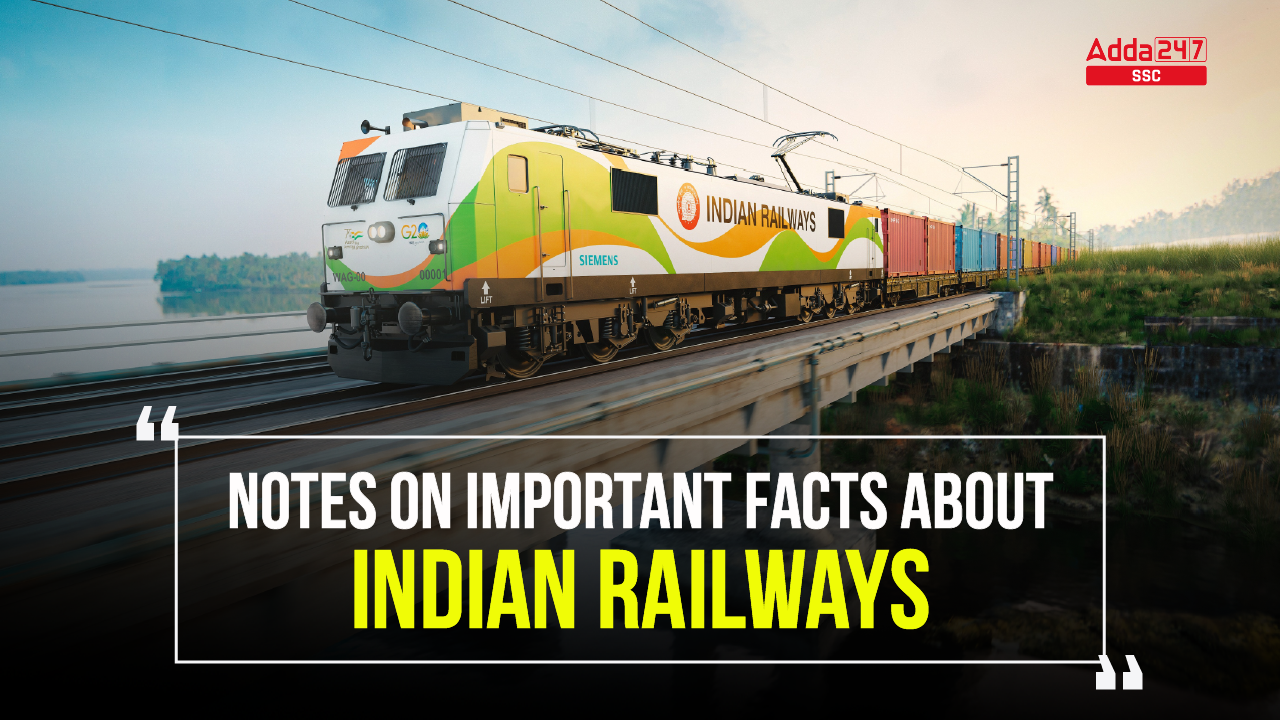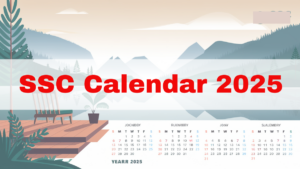Dear Readers,
While the GA section may seem less daunting, it holds significant importance in reaching the score necessary to surpass the cut-off marks. To aid your preparation for SSC and Railway Exams, we are offering crucial facts about Indian Railways. Consistently following the content provided on this website and the Adda247 app regarding important general knowledge questions can greatly enhance your performance in the GA section.
We extend our best wishes to you for all the upcoming exams.
Important Facts About Indian Railways
Indian Railways, one of the world’s largest railway networks, was established on April 16, 1853. It ran its first passenger train between Bori Bunder in Mumbai and Thane, covering a distance of 34 km. Let’s discuss some of the important facts about Indian Railways below.
- Indian Railways is the largest rail network in Asia and the world’s second-largest
- Gorakhpur Junction in Uttar Pradesh boasts the world’s longest railway platform, measuring about 1,366.33 meters.
- The train that has the longest run in terms of distance and time on the Indian Railways network is the Vivek Express travels a distance of 4273 km
- Jodhpur Railway Station in Rajasthan holds the title of the cleanest railway station in India.
- The train that runs between India and Pakistan is the Samjhauta Express
- Train running between India and Bangladesh is: Maitree Express
- Indian train that won the World Heritage Status from UNESCO: Darjeeling Himalayan Railways
- Indian Railways transports almost 2.5 crore passengers daily.
- Dibrugarh Kanyakumari Vivek Express is the longest train route in the Indian Subcontinent.
- The Slowest train in India is the Mettupalayam Ooty Nilgiri passenger train.
- Venkatanarasimharajuvaripeta railway station has the longest name among all stations on the Indian Railway system.
- The highest railway station in India is Ghum railway station (West Bengal).
- The Longest Railway bridge in India: Vallarpadam Bridge, 4.62km (Kerala)
- The Longest Railway Tunnel in India (Asia’s second): Pir Panjal Railway Tunnel 11.2km (Jammu and Kashmir)
- Total zones in Indian railway-17
- The slogan of Indian Railway: Lifeline of the Nation
- Slowest train in India: Mettupalayam Ooty Nilgiri Passenger which runs at a speed of 10kmph, 15 times slower than the fastest running train. Since this train runs in the hilly region there are speed limits to comply
- Shortest run by a train: Scheduled services between Nagpur and Ajni stations situated just 3km from each other.
- Shortest station name: Ib, near Jharsuguda in Odisha and Od, near Anand in Gujarat
- Trains with most stops: The record for the maximum number of stops by an Express/Mail train is held by Howrah – Amritsar Express 115 halts
- Two stations at the same location: Srirampur and Belapur are two different stations in the Ahmednagar district of Maharashtra which are both at the same location on the railway route but on opposite sides of the track.
- Most powerful locomotive: The Electric locomotive WAG-9 used for hauling heavy freight rakes is the most powerful locomotive in the Indian Railway’s fleet
- Junction with the most number of routes originating from it: Mathura junction with 7 routes.
- Most number of parallel tracks/ Three gauges at one station: Seven parallel tracks between Bandra Terminus and Andheri – 10km.
- Busiest station: VIJAYAWADA JN is the busiest railway station, with 247 unique trains.
- Oldest Working Locomotive: Indian Railways still has the oldest preserved locomotive in working order, the Fairy Queen which was made way back in 1855. It is the oldest functioning steam engine in the world, which finds a place in the Guinness Book of World Records and got the Heritage Award at the International Tourist Bureau, Berlin in March 2000
- Labor Force: Indian Railways is the world’s eighth-largest commercial or utility employer, by the number of employees, with over 1.4 million employees. It is also India’s largest employer.
- Railway Network: Though it is commonly believed, India doesn’t have the largest railway network in the World. India comes fourth with approx. 65,000 km of the railroad after the US, Russia, and China.
- Steam Locomotives: The manufacture of steam locomotives in the country was stopped in 1972.
- Underground Railway: First Underground Railway that was opened for public use was Calcutta Metro.
- Electric Trains: First Electric coach ran on the 3rd February 1925 between Bombay VT and Kurla stations.
- Computerized Reservations: The first Reservation through the computer System commenced in New Delhi in the year 1986.
- Palace on Wheels: Indians were not allowed to board the Palace on Wheels luxury train for quite a while when it was launched on Republic Day of 1982.
- Passenger Load: The Indian Railways (IR) carries over 23 million passengers daily which is perhaps more than the entire population of Australia, New Zealand and Tasmania put together. Annually Indian Railways ferries 421 billion passengers.
- Total Number of Trains: Indian Railways runs as many as 19,000 trains every day. Some 12,000 trains are for passengers and 7,000 for freight.
- Number of classes of Accommodation: 10 (1AC, 2AC, 3AC, 3AE, EC, CC, FC, SL, 2S, II-UR)
- Total seating capacity of the Indian Railways: 5.06 million The total population of Finland or Singapore can be easily seated inside all the Indian Trains
- Zone with highest absolute earnings: Northern Railway (123.27 mn)
- Zone with highest earnings from Passenger Business per track kilometer: North Central Railway NCR (5.4 mn/km)
- Zone with highest earnings from Freight Loading and overall business per track kilometer: Eastern Coastal Railway ECOR (18.1 mn/km, 20.1 mn/km)
- State with highest per capita rail route km: Andhra Pradesh* (0.1 meter/person)
- State with lowest per capita rail route km: Kerala (0.03 meter/person)
- The Railway station of Navapur is built in 2 states; one-half of it is in Maharashtra and the other half is in Gujarat.
- The Trains got toilets after Indian Railways completed about 50 years.
- Indian Railways has a mascot – Bholu, the Guard Elephant.
- Indian Railways launched an awareness campaign train on World AIDS Day, December 1, 2007, called the Red Ribbon Express.
- To reduce its carbon footprint, Indian Railways has introduced eco-friendly initiatives, including solar-powered trains and waste management practices.
Important Facts About Indian Railways, Know All Details, Read in Hindi



 Upcoming Government Exams, Complete Govt...
Upcoming Government Exams, Complete Govt...
 Govt Jobs 2025, Latest Upcoming Governme...
Govt Jobs 2025, Latest Upcoming Governme...
 SSC Exam Calendar 2025–26 Out, Check All...
SSC Exam Calendar 2025–26 Out, Check All...









